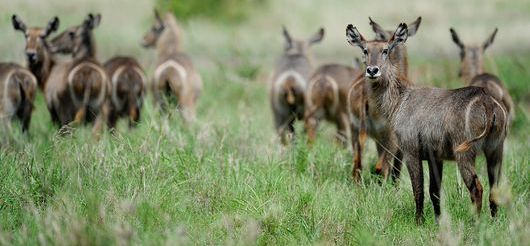Although a considerable amount of scientific research on large carnivores have been developed in EU, species management quite often does not take advantage of this knowledge and lethal actions are chosen instead of more efficient sustainable tools. This study aims to cover this gap by analysing and discussing the best...
Forest Wildlife Management and Conservation
16 December 2019
16 December 2019
This review examines a subset of existing and emerging issues associated with the management and conservation of the world's forests and forest biodiversity. Four topics are covered: (1) key processes threatening forest biodiversity. (2) broad strategies for mitigating threatening processes. (3) climate change and the conservation of forest biodiversity. and...
Empowering Communities to Manage Natural Resources: Case Studies from Southern Africa
16 December 2019
16 December 2019
This report consists of a series of individual’s country papers which focus on community empowerment and power relations in community-based natural resource management (CBNRM) initiatives based on existing literature and the direct experiences of authors in eight southern/eastern African countries . The case studies cover a diversity of sectors from...
IIED - Conservation, crime and communities: case studies of efforts to engage local communities in tackling illegal wildlife trade
16 December 2019
16 December 2019
This volume of case studies explores well-known and less well-known examples of both the highs and lows of engaging local communities in tackling illegal wildlife trade, highlighting that while community engagement is not a panacea, it can, under the right circumstances, be highly effective. This publication is dominated by case...
ICIMOD - Mitigating Human-Wildlife Conflict in Nepal: A Case Study of Fences around Chitwan National Park
16 December 2019
16 December 2019
This report focus on assessing the sustainability of the electric fencing as a HWC mitigation measure in the buffer zones and adjoining areas of the Chitwan National Park (CNP) selected by the Government of Nepal for developing a REDD+ programme. The result of this assessment intended to prepare for...
An Analysis of Game Meat Production and Wildlife-based Land Uses on Freehold Land in Namibia: Links with Food Security
16 December 2019
16 December 2019
This report aims to gain insights of wildlife-based land uses (WBLU) on freehold land in Namibia and link with food security. This is developed through documenting the scale of meat production on Namibian farmlands, how game meat is used and the economic and social benefits resulting from game meat production....
How does FSC forest certification affect the acoustically active fauna in Madre de Dios, Peru
16 December 2019
16 December 2019
This study through the passive acoustic monitoring (PAM) sampling technique acquired data to document the response of the acoustically active fauna to forest management types. Specifically, the study evaluated how soundscapes composition and acoustic spaced used (ASU) vary among the three-forest management types, and how the bird community differs among...
Exploring Bushmeat Consumption Behaviours Among Phnom Penh citizens
16 December 2019
16 December 2019
Illegal commercial hunting is the greatest immediate threat to wildlife in Cambodia. Despite this significant demand-driven commercial hunting threat to a range of endangered species, there are currently no actions aiming to reduce the demand for wildlife products in Cambodia. This report aims to help fill this gap by identifying...
This document summarises the key issues that have been identified through the extensive research carried out through the programme the ‘Engendering’ Eden, including case study work on ICDPs (Integrated Conservation and Development Projects) in Africa and Asia. It draws out the experiences and lessons learnt from them in order to...
Living with the Wild. Mitigating Conflict between Humans and Big Cat Species in Uttar Pradesh
16 December 2019
16 December 2019
This Conservation Action Series report outlines a holistic model of conflict mitigation that evolved under Wildlife Trust of India’s Uttar Pradesh Big Cat Conflict Mitigation Project (now the Terai Tiger Project), run in partnership with the state forest department. The field tested approach developed involves a sustained process of engagement...

